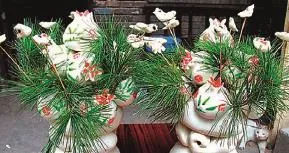CULTURE Intangible Cultural Heritage
CULTUREIntangible Cultural Heritage
Folk Activities
Appreciating autumn scenery: The festival is the best time to enjoy the fall scenery. As a typical farming custom, “Shaiqiu” (literally drying crops) is of great regional importance in mountain villages in southern China, especially in Hunan, Guangxi,Anhui, and Jiangxi. Due to complex and diverse landforms, villages there have only a limited amount of flat land. Farmers have to use areas around their houses as well as windowsills and roofs to air their crops, and as time passes it has evolved into a traditional agricultural custom, especially in Wuyuan, Jiangxi Province. Each year, hundreds of thousands of visitors go there to admire the autumn scenery as well as the bumper harvest.
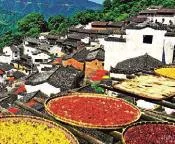
Climbing mountains: The Double Ninth Festival is also called “Mountain-climbing Festival.”Regarding the origin, one version is that it was ancient people’s worship of the god of mountains,who could expel bad luck and disasters. In addition,when the autumn harvest is reaped, farmers have time to go up into the mountains to collect wild fruit and medicinal ingredients.
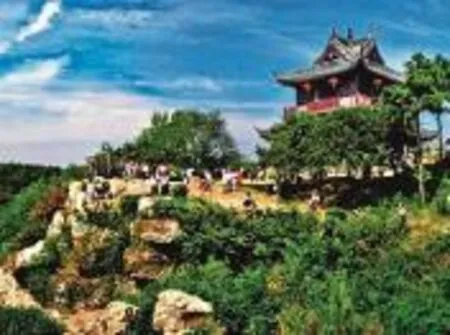
Eating Double Ninth Cake: The cake is also known as “chrysanthemum cake” or “flower cake.”It is said that the pastry was originally prepared after autumn harvests to give farmers a taste of what was just in season. It gradually became today’s cake for people to eat on the Double Ninth Day. Some cakes are made of nine layers, resembling a pagoda.
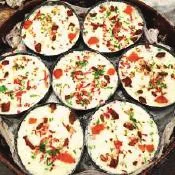
Chrysanthemum appreciation and drinking chrysanthemum wine: Chrysanthemum blossom in the ninth lunar month has the beautiful name“flower of longevity.” It is said the custom stems from the idyllist Tao Yuanming (365-427), who was known for living in seclusion, writing poems,and drinking and appreciating chrysanthemums. According to traditional Chinese medicine, the chrysanthemum has the functions of clearing excessive heat, enhancing the liver and eyes, and diminishing inflammation. The brewing of chrysanthemum wine has prevailed since the second century BC. During the festival, appreciating chrysanthemum flowers while drinking chrysanthemum wine is a popular family pastime.
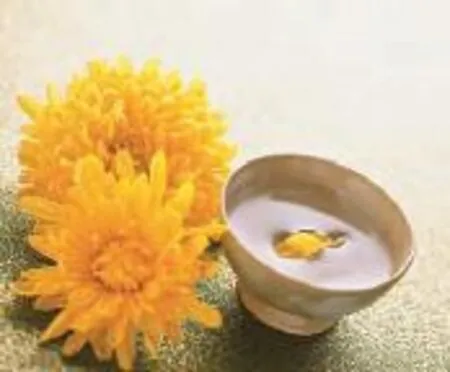
Carrying dogwood: Dogwood can repel insects and get rid of humidity. The custom of wearing dogwood was popular in the Tang Dynasty. Ancients believed that carrying dogwood leaves and fruits on the Double Ninth Festival could prevent diseases and avoid disasters. As clothes easily became mildewed and mosquitoes breed in the autumn rain, using dogwoods shows Chinese ancients’ common sense as regards hygiene.
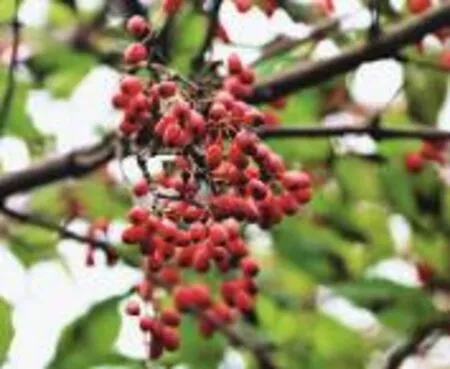
Double Ninth Festival in Shangcai
Shangcai County in Zhumadian City, Henan Province, is the cradle of the Double Ninth Festival. The mountain that Heng Jing climbed is believed to be Lugang Mountain to the west of Shangcai. According to county annals, each year the flooding Ruhe River made the place a water world. The local authorities there built a storied building to check the situation. Today a ruined stele is all that remains. During the festival, hordes of people visit here to receive blessings.
In Shangcai, many cultural products, such as derived folk programs, chrysanthemum wine, papercuts and Double Ninth Cake, have been well preserved and carried forward. Among them, peach pit carvings and dogwood-filled pouches have been listed as intangible cultural heritage from Henan Province.
In 2011, Shangcai customs were listed as national intangible cultural heritage.
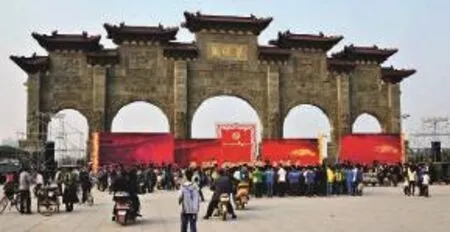
Double Ninth Festival in Huangcheng Village
Huangcheng Village in Yangcheng County, Shanxi Province, has preserved the traditional Double Ninth Festival customs since ancient times. Each year during the festival, the temple fair is a huge event.
The fair was originally held in Xishan Temple. In recent years, it has become much bigger and the duration lengthened from three days to nine.
Buying winter clothes for the aged is a must for participants in the temple fair. Other commodities include dogwood wine and sacrifice utensils. Sticky rice with dried persimmon and red bean rice are essential items during the festival. People should bring honey wine or dogwood wine to their parents, and make special local desserts for them. The most popular program is the opera performance narrating stories about respecting the aged.
In 2011, the custom was listed as a national intangible cultural heritage.
